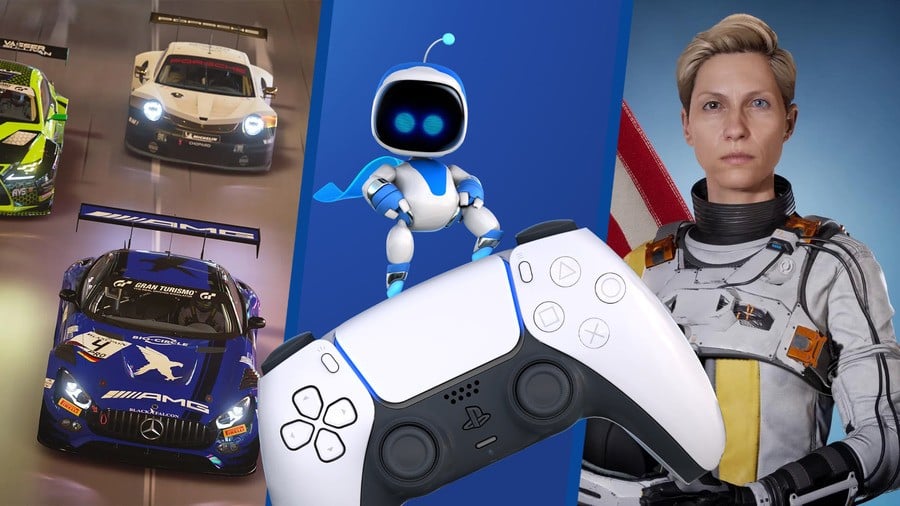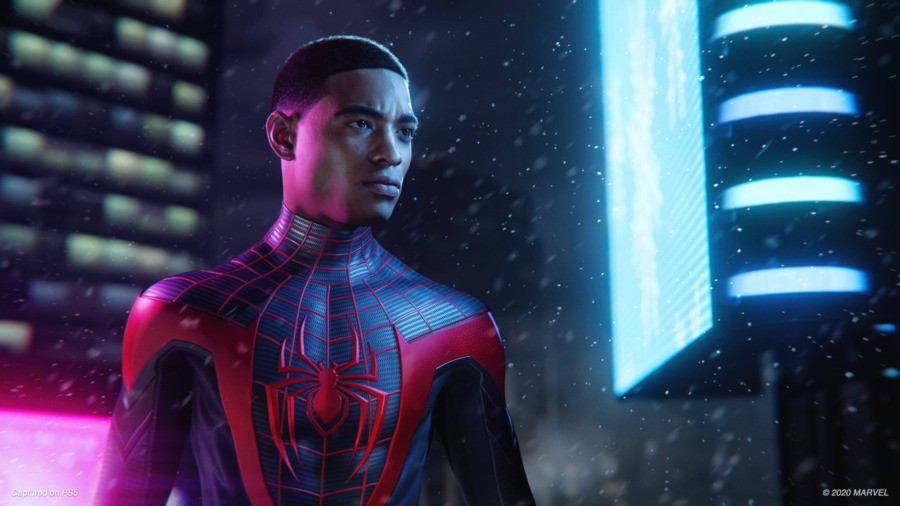

As we’ve already iterated as part of our PS5 review, the new DualSense controller is a bit of a revelation in terms of gameplay feedback. The pad allows you to feel PlayStation 5 games in a way that you never could with past DualShock devices, providing force feedback in the triggers and ridiculously realistic rumble sensations that have the capability of illustrating different textures.
But while the technology is revolutionary, it’s ultimately going to come down to developers to use it in meaningful ways. As we continue our coverage of Sony’s next-gen console, we thought it would be useful to put together some of our impressions of the controller thus far, and how it’s being implemented across a range of different games and genres.
Astro’s Playroom

Yes, we’ve talked about it to death, but by virtue of it coming first in this alphabetically ordered impressions article, indulge us one last time. Astro’s Playroom is the best example of DualSense’s capabilities thus far, leveraging all of the pad’s features to frankly frightening levels. This is a game where you can physically feel raindrops landing in your hand; where a machine gun rattles under your fingertips when your fire it. Extraordinary stuff, and the benchmark for Sony’s controller.
Call of Duty: Black Ops Cold War

Call of Duty: Black Ops Cold War is massively improved with the DualSense controller, as the triggers add recoil to every shot you fire. Depending on the weight of the weapon, you’ll feel resistance in L2 when you aim down sights, which gives heft to larger firearms. The real cool feature, however, is the way R2 rattles under your finger – and even jams when you’re reloading. Meanwhile, the haptics add directional feedback to what’s happening on screen, such as nearby explosions and bullets. It’s truly revolutionary stuff, and while professionals may feel it affects their performance, as a casual we enjoyed the added immersion.
Devil May Cry 5: Special Edition

Devil May Cry 5: Special Edition is using the DualSense as one of the reasons to justify itself, but its implementation is pretty meaningless overall. Much of the haptic feedback is based upon the original game’s DualShock 4 rumble, so there’s not really much texture here. It’s main “feature” is Nero’s Exceed, a move which effectively allows the character to “rev up” his sword like it’s a motorcycle. This genuinely feels cool under the finger – it reminds us of those flashlights without a battery that you need to squeeze to illuminate – but the mechanic always confounded fans of the original, and here it’s even harder to execute during intense combat scenarios.
DIRT 5

The potential for DIRT 5 to match Astro’s Playroom was extraordinary, but we’ve been a teensy bit disappointed with the title’s DualSense implementation. To be fair, the adaptive triggers are very well utilised, letting you feel tension when you pull the brake at high speeds, while the accelerator also illustrates the changes in grip as you transition between different surfaces. The haptic feedback, however, lacks nuance. We’d hoped for different textures, depending on whether you’re driving on dirt, snow, or ice. There’s a little bit of that, but generally the title just pummels the pad’s motors, making for an exhausting experience that lacks any real nuance.
Marvel’s Spider-Man: Miles Morales

It may be a first-party exclusive, but Marvel’s Spider-Man: Miles Morales makes sparing use of Sony’s new controller technology. There’s really not much to talk about here at all: there’s some extra tension in the triggers when swinging, which is weird at first but easy to adapt to. There’s also a little extra dimension to the rumble when in combat; for example, when you perform Venom punches you’ll feel the transition of energy pulse across the pad. And that’s about it really. There is a cool moment where Miles types on a keyboard, and you can feel the individual button presses all across the controller.
NBA 2K21

NBA 2K21 sounds like it’s working the DualSense controller a little bit too hard, because out of all the games we’ve played on the PS5, this is the only one where we can actually hear the controller’s mechanics working inside. We’re not a massive fan of what we’ve played so far, to be honest. You’ll feel the triggers tighten when you try to sprint with a player who’s low on energy, which makes sense. Similarly, when you’re guarding an opponent, the L2 button will rattle to demonstrate the physical exertion of the match-up. Personally, we’d have liked a little more subtlety here; a slight pulse when bouncing the ball, for example, would have made more sense than what the developer’s doing.
Sackboy: A Big Adventure

Sackboy: A Big Adventure is a prime example of a game that disappoints a little after playing Astro’s Playroom. To be clear: its use of the DualSense is not bad at all. However, once you’ve physically felt different surfaces through the controller, it’s hard to play a title that doesn’t provide the same level of feedback. There are some cool ideas here, though: browsing menus genuinely feels tactile due to the way the haptic feedback is utilised, while the triggers tighten as you pick up objects to reflect the strain of its eponymous hero. There are even some moments where you have to use motion controls, and the gyroscopes work perfectly. It’s just, we can’t help but be disappointed when it rains in game and you can’t feel it through the DualSense now.
We’ll be adding more games to this article as the European launch approaches, but for now these are our thoughts on how the DualSense is being used in half-a-dozen or so games. What have you been impressed by so far? Which title are you most eager to experience? Feel more in the comments section below.



